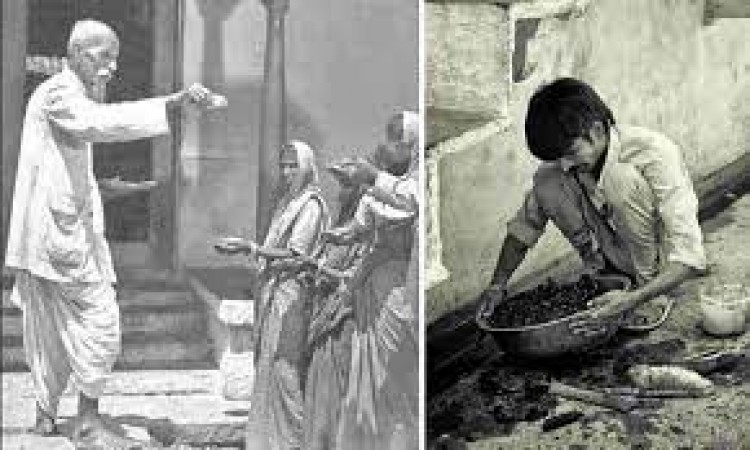
The issue of equality and inequality among different castes in society has been a topic of significant debate and controversy for centuries. The caste system, deeply rooted in the history and culture of various regions, has played a pivotal role in shaping the social fabric of communities. This article explores the complexities and challenges surrounding caste-based discrimination and the efforts towards achieving true equality in society.
Understanding Equality and Inequality:
Definitions and Concepts:
Equality, in the context of caste, refers to the fair treatment and opportunities for individuals regardless of their caste identity. It advocates that all members of society should have equal access to resources, education, and employment without facing discrimination based on their caste.
Inequality, on the other hand, encompasses the unequal distribution of opportunities, resources, and social privileges among different castes. It perpetuates the marginalization of certain groups, limiting their access to progress and prosperity.
Historical Context:
The roots of the caste system can be traced back to ancient India, where society was classified into four main varnas (castes) based on occupation. Over time, this system evolved and became more rigid, leading to discrimination and social hierarchy based on birth.
Caste System: Origins and Structure:
Ancient Roots:
The caste system's ancient origins were influenced by various factors, including religious beliefs, socio-economic structures, and political power. The division of labor based on occupations led to the categorization of society into distinct castes, with the Brahmins (priests and scholars) at the top and the Shudras (laborers) at the bottom.
Caste Hierarchy:
The caste system established a hierarchical order, with social status inherited from one's parents. This system classified individuals into higher castes, enjoying more privileges, and lower castes, facing social exclusion and discrimination.
Equality Movement in Society:
Early Efforts for Equality:
Throughout history, there have been attempts to challenge the caste-based discrimination and advocate for equality. Visionaries and social reformers like Dr. B.R. Ambedkar and Jyotirao Phule played pivotal roles in fighting for the rights of oppressed castes.
Key Figures and Movements:
The Indian independence movement saw a surge in movements striving to dismantle the caste system and establish an egalitarian society. Several organizations and social activists emerged, demanding justice and equal rights for all.
Modern Challenges and Debates:
Reservation Policies:
To address historical disadvantages faced by marginalized castes, reservation policies were introduced to provide them with opportunities in education and employment. However, debates continue regarding the effectiveness and impact of these policies on social mobility.
Cultural and Social Impacts:
Caste-based discrimination is deeply ingrained in society's cultural fabric. Breaking away from these ingrained prejudices remains a significant challenge in achieving genuine equality.
Perceptions and Stereotypes:
Media and Caste Representation:
The media's portrayal of certain castes has often perpetuated stereotypes, contributing to social divisions and prejudice.
Breaking Stereotypes:
Efforts are being made to challenge stereotypes and promote positive representations of all castes, fostering a more inclusive society.
Education and Economic Disparities:
Access to Education:
Unequal access to education remains a significant barrier for marginalized castes, limiting their socio-economic growth.
Employment Opportunities:
Discrimination in the job market hinders equal opportunities for individuals from different castes, leading to economic disparities.
Political Representation:
Caste and Politics:
Caste-based politics has been a recurring phenomenon in various regions, influencing electoral outcomes and governance.
Electoral Dynamics:
The influence of caste identities on voting patterns raises questions about the true representation of diverse interests in politics.
Role of Government and Institutions:
Affirmative Actions:
Government-led affirmative actions seek to uplift disadvantaged castes and promote social inclusivity.
Social Welfare Schemes:
Various welfare schemes aim to bridge the socio-economic gap between different castes, but their effectiveness is often debated.
Intersectionality: Gender and Caste:
Women's Rights and Caste:
Women from marginalized castes often face double discrimination, highlighting the intersectionality of gender and caste issues.
Double Marginalization:
Efforts to address gender inequalities must also consider the additional challenges faced by women from lower castes.
Religious Dimensions:
Caste in Religious Practices:
Caste hierarchies have historically influenced religious practices, reinforcing social divisions.
Reform Movements:
Religious reformers have played a vital role in challenging caste-based discrimination and promoting inclusivity.
Debates on Reservation and Affirmative Action:
Meritocracy vs. Social Justice:
Debates arise on whether reservations based on caste compromise on meritocracy or act as necessary measures for social justice.
Effectiveness and Alternatives:
Exploring alternative methods to address social disparities without compromising on the principle of equal opportunities.
The Way Forward:
Embracing Inclusivity:
Promoting dialogue and understanding among different castes is crucial for building a more inclusive society.
Encouraging Dialogue:
Open conversations about caste-related issues are essential for challenging stereotypes and prejudices. The controversy surrounding equality and inequality among different castes in society is deeply intertwined with historical, cultural, and political factors. Achieving true equality requires a collective effort to challenge discriminatory practices, promote inclusivity, and ensure equal opportunities for all. By embracing diversity and working towards social harmony, we can move closer to a more just and equitable society.
OpenAI to soon set up for the New App Launch on Android and iOS
Toyota to Open up with a New Generative Energy Source for Space Missions